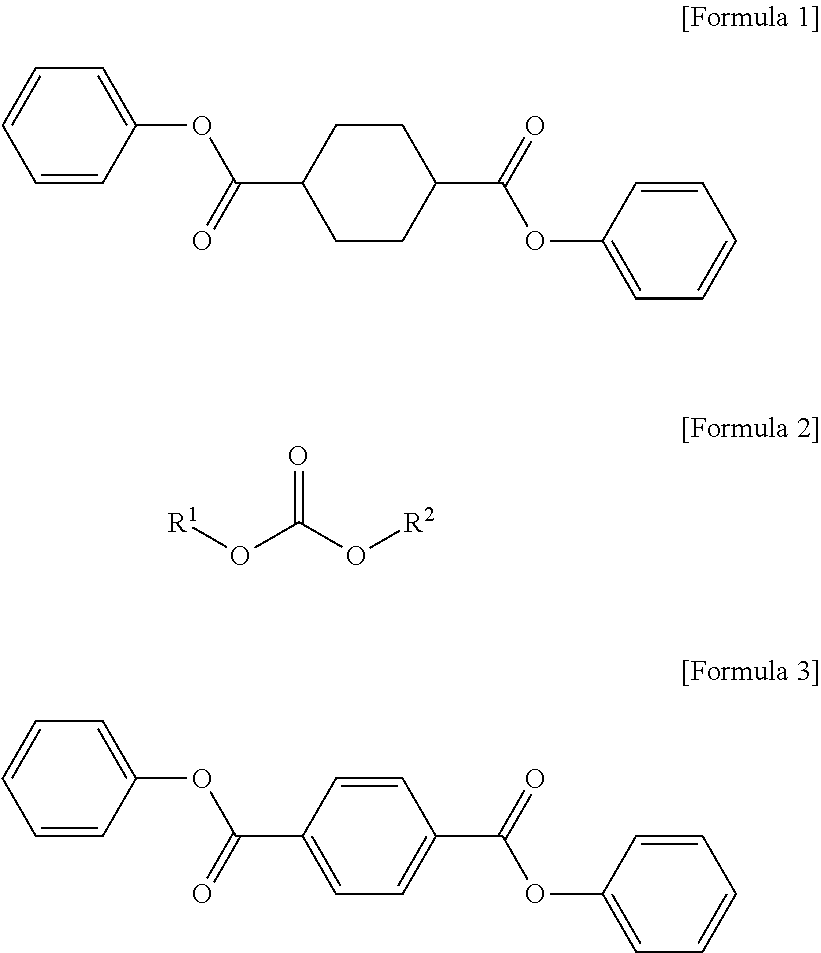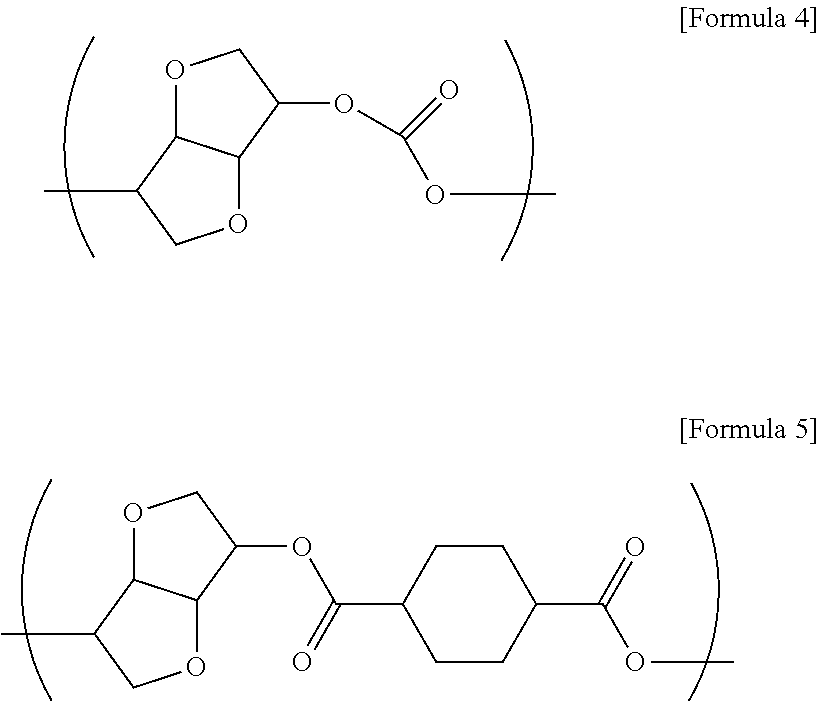Bio-based polycarbonate ester and preparation method therefor
a technology of polycarbonate ester and polycarbonate, which is applied in the field of bio-based polycarbonate ester, can solve the problems of easy discoloration at high temperatures, low oxidation stability, and deterioration of product transparency, and achieve excellent mechanical properties such as tensile strength and impact strength, and prevent discoloration and deterioration of physical properties. , the effect of reducing production costs
- Summary
- Abstract
- Description
- Claims
- Application Information
AI Technical Summary
Benefits of technology
Problems solved by technology
Method used
Image
Examples
example 1
[0093]A 12-liter twin-screw batch kneader reactor (CKR10B-170, LIST Corp.) was used as a high-viscosity polycondensation reactor. The reactor was charged with 3,204 g (21.92 moles) of isosorbide (ISB, Roquette Freres), 710 g (2.19 moles) of 1,4-diphenyl-cyclohexanedicarboxylate (DPCD, SK Chemicals), 4,215 g (19.68 moles) of diphenyl carbonate (DPC, Changfeng), and 2.87 g of a 1% aqueous solution of sodium aluminate (NaAlO2) at room temperature. Thereafter, the temperature was raised to 150° C. Once the temperature reached 150° C., the pressure was reduced to 500 mbar, and the temperature was then raised to 190° C. over 1 hour. During the temperature elevation, phenol began to be generated as a reaction byproduct. When the temperature reached 190° C., the pressure was reduced to 100 mbar and maintained for 20 minutes, and then the temperature was raised to 230° C., over 20 minutes. Once the temperature reached 230° C., the pressure was reduced to 10 mbar, and then the temperature was...
example 2
[0095]The same procedures as Example 1 were repeated to prepare a polycarbonate ester, except that 3,204 g (21.92 mol) of ISB, 1,421 g (4.38 mol) of DPCD, and 3,747 g (17.49 mol) of DPC were used.
example 3
[0096]The same procedures as Example 1 were repeated to prepare a polycarbonate ester, except that 3,204 g (21.92 mol) of ISB, 2,131 g (6.57 mol) of DPCD, and 3,278 g (15.30 mol) of DPC were used.
PUM
| Property | Measurement | Unit |
|---|---|---|
| viscosity | aaaaa | aaaaa |
| flexural strength | aaaaa | aaaaa |
| tensile strength | aaaaa | aaaaa |
Abstract
Description
Claims
Application Information
 Login to View More
Login to View More - R&D
- Intellectual Property
- Life Sciences
- Materials
- Tech Scout
- Unparalleled Data Quality
- Higher Quality Content
- 60% Fewer Hallucinations
Browse by: Latest US Patents, China's latest patents, Technical Efficacy Thesaurus, Application Domain, Technology Topic, Popular Technical Reports.
© 2025 PatSnap. All rights reserved.Legal|Privacy policy|Modern Slavery Act Transparency Statement|Sitemap|About US| Contact US: help@patsnap.com



